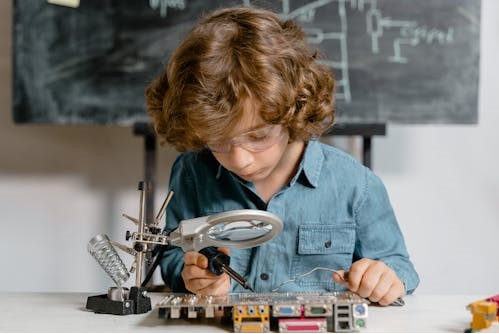What is the Actual Value of STEM Education?

STEM (science, technology, engineering, and mathematics) education is essential for preparing kids for success in the workplace. STEM education helps in fostering the development of abilities that go far beyond those required in conventional science subjects. Good STEM experiences will enable your child to explore a wide range of interests, gain valuable skills for any industry, and develop into a self-assured problem solver in any walk of life.
Values of Interdisciplinary STEM Education
A range of interdisciplinary STEM education initiatives were introduced in the early childhood setting. Parents and young children had generally positive perceptions regarding STEM education. A significant portion of parents saw the financial benefit of STEM education for their family in addition to the educational benefits, believing that STEM education could help their kids succeed economically in the future. Early childhood educators saw the benefits of STEM education from the educational and social standpoints, but they also recognized the practical limitations of time, resources, and support. They were concerned about the subject matter and the ability of their teachers, as well as the needs of their students, their developmental stages, and their safety.
Engaging Approach to STEM Education
Policymakers, industry leaders, and educators are under tremendous pressure to improve the quality of mathematics, science, and technology education at K–12 levels and to increase the number of students who are interested in STEM fields. The focus is particularly among groups who have not traditionally chosen STEM careers: women, members of racial and ethnic minorities, and people from lower socioeconomic backgrounds. This pressure stems from a desire to better humankind as much as from a desire to stay ahead of other developed nations. In addition to being socially unfair, the continued lack of diversity in research labs and classrooms undermines the vigor and inventiveness of STEM pursuits. Homogeneity in thought and perspective reduces the likelihood of many inventions, breakthroughs, and major advances in science-related understanding and applications.
STEM Experience
There are a ton of options available to you to prioritise STEM experiences for your child as they develop their creative potential, including summer camps, after-school programs, and at-home activities. With a variety of programs, assist them in utilising the power of play and experiential STEM learning! As they work together with friends and take on real-world difficulties, campers develop their perseverance and confidence, which motivates them to dream big no matter what route they follow.
The results indicate that middle school students’ attitudes toward science and mathematics are improved by STEM education programs. As previously said, these kinds of activities play a big part in encouraging student enthusiasm and developing favourable perceptions of STEM fields and vocations. For instance, students that participated in an engineering design curriculum had better attitudes about STEM. In a different setting, pupils who participated in an engineering design program were interested in science and engineering. Contextual encounters outside of the classroom are essential for helping students understand and explore STEM concepts while also strengthening their STEM competencies. Students can freely explore and position themselves in STEM fields in informal situations.


